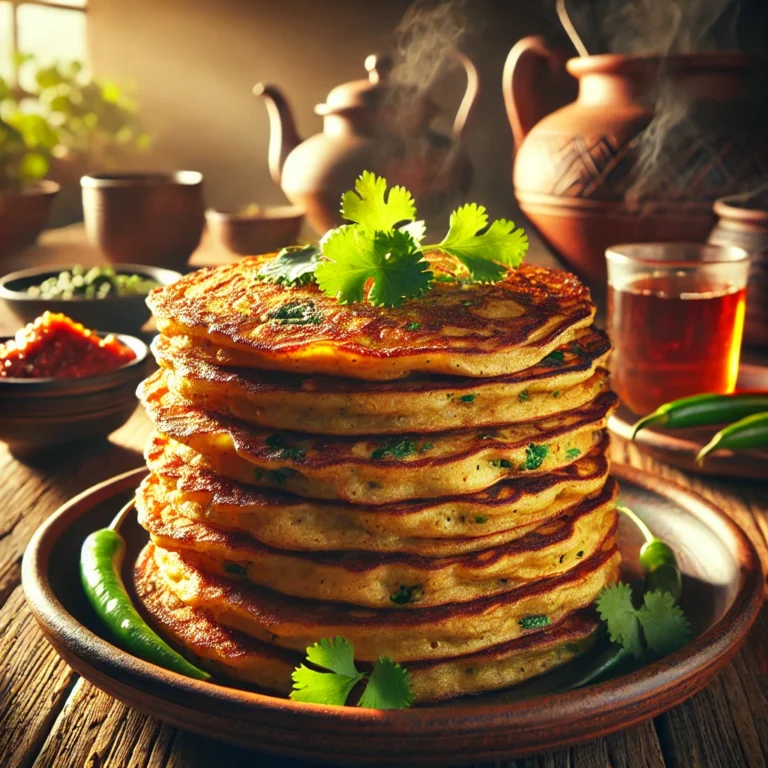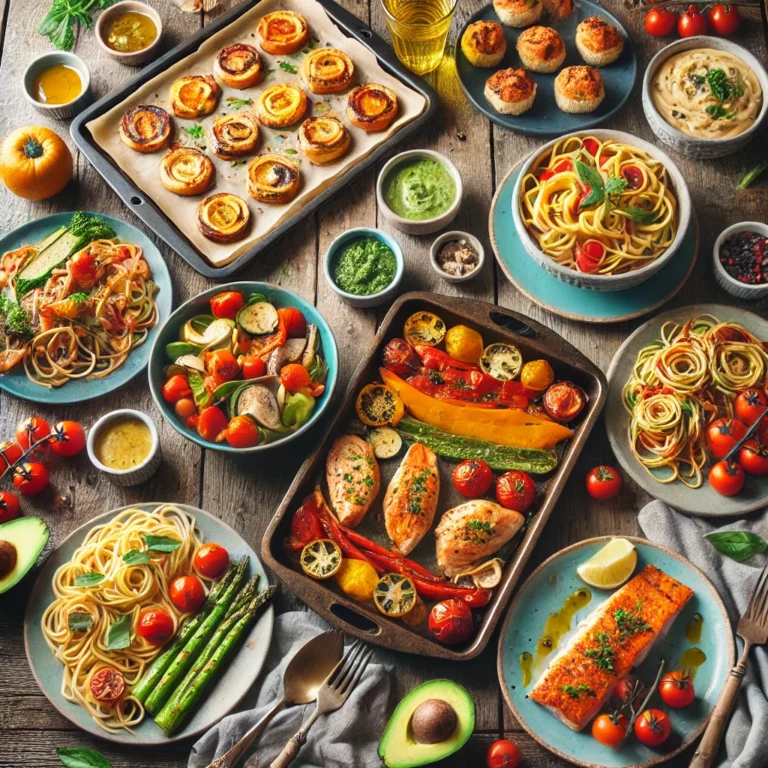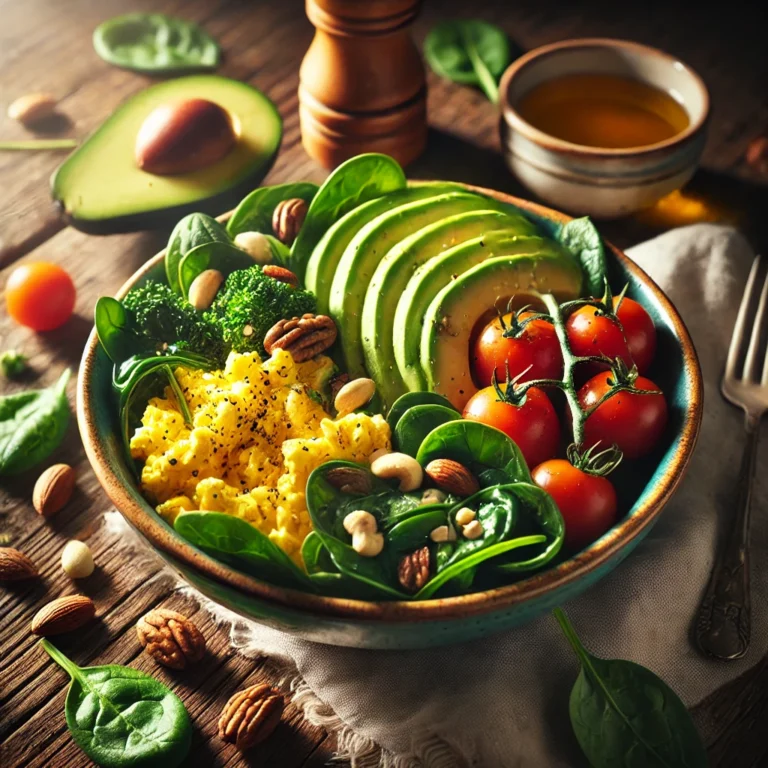6 Nutrition Hacks to Boost Energy and Conquer Cravings
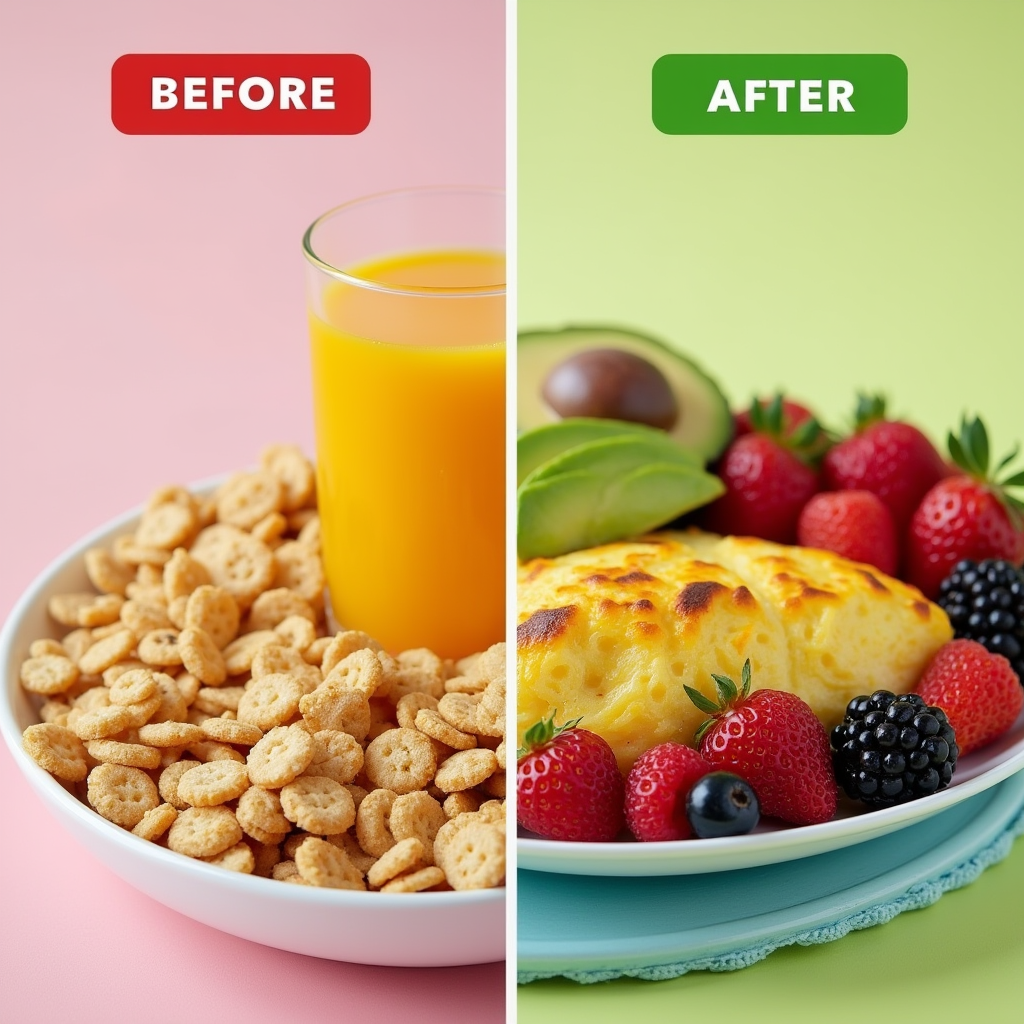
Table of Contents
Introduction: How to Boost Energy
“53% of Americans Battle Daily Energy Slumps—Here’s How to Rewire Your Diet for Unstoppable Vitality”
If you’re part of the 130 million Americans who rely on caffeine to power through afternoons or scroll Instagram guiltily as another fad diet fails, you’re not alone. The truth? Our plates have become battlegrounds—flooded with conflicting advice, ultra-processed traps, and fleeting promises of “quick fixes.”
But what if the secret to boosting energy naturally, achieving sustainable weight loss, and unlocking lifelong health isn’t about restriction or willpower, but working smarter with science-backed meal planning?
Recent studies reveal a harsh reality: Despite $78 billion spent annually on weight loss programs, 80% of diets fail within a year. Why? Traditional approaches ignore two game-changing factors:
gut health optimization and our body’s innate rhythms.
The latest research from Harvard and the American Journal of Clinical Nutrition shows that imbalances in gut bacteria can sabotage metabolism, amplify cravings, and drain energy—even if you’re eating “clean.” Meanwhile, outdated calorie-counting models overlook how meal timing, fiber diversity, and anti-inflammatory foods act as metabolic levers.
This isn’t another list of rigid rules. Instead, we’re diving into 10 revolutionary strategies that merge cutting-edge nutrition science with real-life practicality. You’ll learn how to:
- Silence sugar cravings by harnessing gut-brain axis science (no willpower required).
- Design science-backed meal plans that align with your circadian rhythm for all-day energy.
- Leverage “forgotten” superfoods to optimize gut health and unlock sustainable weight loss.
- Transform simple ingredients into inflammation-fighting meals in 15 minutes or less.
Forget juice cleanses and extreme keto—2025 is about progress, not perfection. Whether you’re a busy parent, a 9-to-5 warrior, or a fitness enthusiast, these actionable hacks work with your schedule—not against it. Ready to ditch energy crashes and finally thrive? Let’s rebuild your plate, one evidence-based bite at a time.
Section 1: The Energy Equation: Fuel Your Day Like a Pro
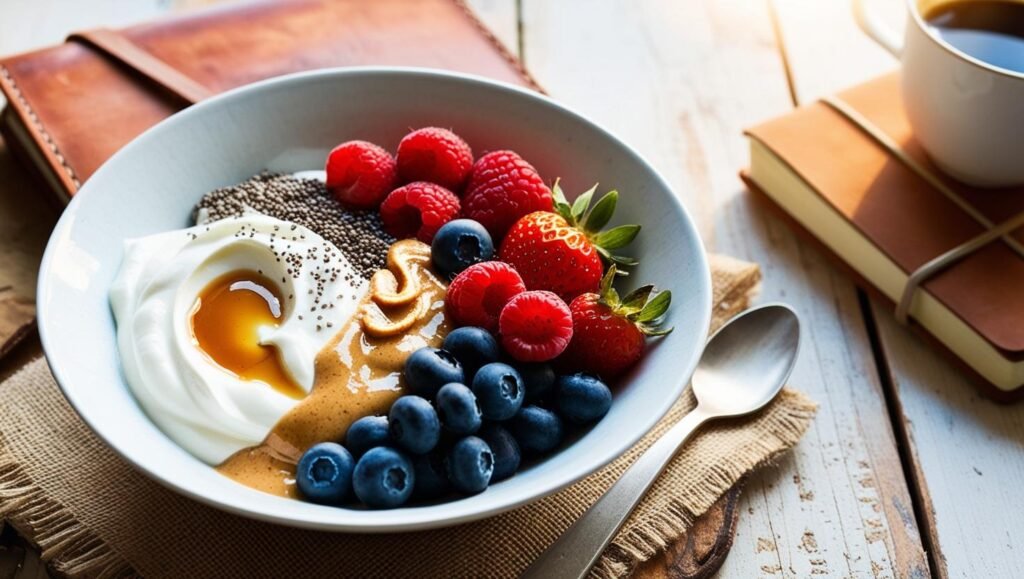
Why Your Breakfast Might Be Sabotaging Your Day
Imagine this: You grab a muffin and latte on your way to work, only to crash hard by 10:30 AM, reaching for a candy bar to survive until lunch.
Sound familiar? This cycle isn’t just about willpower—it’s a biochemical trap.
A 2023 American Journal of Clinical Nutrition study found that 65% of Americans start their day with refined carbs and added sugars, triggering blood sugar spikes followed by crashes that leave them foggy, hungry, and irritable. These rollercoaster swings don’t just zap energy—they also activate fat-storage hormones like insulin, undermining sustainable weight loss goals.
The 3 Macronutrient Mistakes Draining Your Energy
Mistake #1: Skipping Protein at Breakfast
- The Science: Protein stimulates glucagon, a hormone that stabilizes blood sugar and keeps you full for 3–4 hours. Without it, you’ll crave quick carbs by mid-morning.
- The Fix: Aim for 20–30 g of protein within 1 hour of waking.
- Example Meals:
- Savory: 2 eggs + smoked salmon + avocado on sourdough
- Sweet: Greek yogurt bowl with hemp seeds, almonds, and berries
- On-the-Go: Protein smoothie with pea protein, spinach, and almond butter
- Example Meals:
Mistake #2: Fear of Healthy Fats
- The Science: Low-fat diets often backfire by replacing fats with sugars. Healthy fats (like omega-3s) reduce inflammation, support brain function, and slow carbohydrate absorption.
- The Fix: Add 1–2 thumb-sized fat portions to every meal.
- Smart Choices: Avocado, walnuts, chia seeds, EVOO, sardines
- Pro Tip: Pair fats with fiber to boost energy naturally—e.g., apple slices + almond butter.
Mistake #3: Overloading on “Naked Carbs”
- The Science: Eating carbs alone (e.g., toast, cereal, fruit) causes rapid glucose spikes. Over time, this can lead to insulin resistance and energy crashes.
- The Fix: Use the “Plate Power Formula” for balanced meals:
- ½ plate non-starchy veggies (spinach, broccoli, peppers)
- ¼ plate protein (chicken, tofu, lentils)
- ¼ plate of fiber-rich carbs (quinoa, sweet potato, oats)
- 1–2 thumbs of fat (avocado, tahini)
Hack #1 To Boost Energy: The Protein + Fiber Pairing Rule
Why It Works:
- Protein and fiber slow digestion, flattening blood sugar curves.
- A 2022 Cell Metabolism study showed this combo increases satiety hormones (leptin) by 40% compared to carb-heavy meals.
Sample Day of Eating (Science-Backed Meal Planning):
- Breakfast: Veggie omelet with spinach, mushrooms, and goat cheese + 1 slice of rye toast
- Lunch: Grilled chicken salad with quinoa, roasted Brussels sprouts, pumpkin seeds, and olive oil dressing
- Snack: Cottage cheese + pineapple + flaxseeds
- Dinner: Salmon + roasted asparagus + wild rice + garlic-tahini drizzle
Meal Prep Shortcut:
Batch-cook 3 protein sources (e.g., shredded chicken, baked tofu, hard-boiled eggs) and 2 complex carbs (brown rice, roasted squash) weekly. Mix and match with fresh veggies for effortless meals.
Hack #2 To Boost Energy: Time Your Carbs to Crush Afternoon Slumps
The Circadian Rhythm Connection:
Research in Nature Communications (2023) reveals that our bodies process carbs more efficiently in the morning and early afternoon. Eating starchy carbs late at night disrupts sleep and next-day energy.
The Strategy:
- Morning/Afternoon: Enjoy energy-sustaining carbs like oats, sweet potatoes, or buckwheat.
- Evening: Focus on protein, healthy fats, and non-starchy veggies (e.g., zucchini noodles with turkey meatballs).
Carb Timing Cheat Sheet:
| Time | Best Carb Choices |
| 7–10 AM | Oats, berries, sprouted grain toast |
| 12–3 PM | Quinoa, brown rice, roasted root veggies |
| After 6 PM | Cauliflower rice, leafy greens, broccoli |
Real-Life Success Story
Meet Sarah, 34 (Busy Mom & Entrepreneur):
“I used to survive on coffee and granola bars until dinner, then binge on pasta. After learning the Plate Power Formula, I started prepping overnight oats with protein powder and chia seeds. My energy stabilized, and I lost 18 pounds in 4 months—without counting calories!”
Your Action Plan To Boost Energy
- Audit Your Breakfast: Replace sugary cereals with protein-rich options.
- Use the ½-¼-¼ plate rule at your next meal.
- Prep 2 proteins + 1 carb tonight for tomorrow’s meals.
Section 2: Crush Cravings with Smart Carb Timing
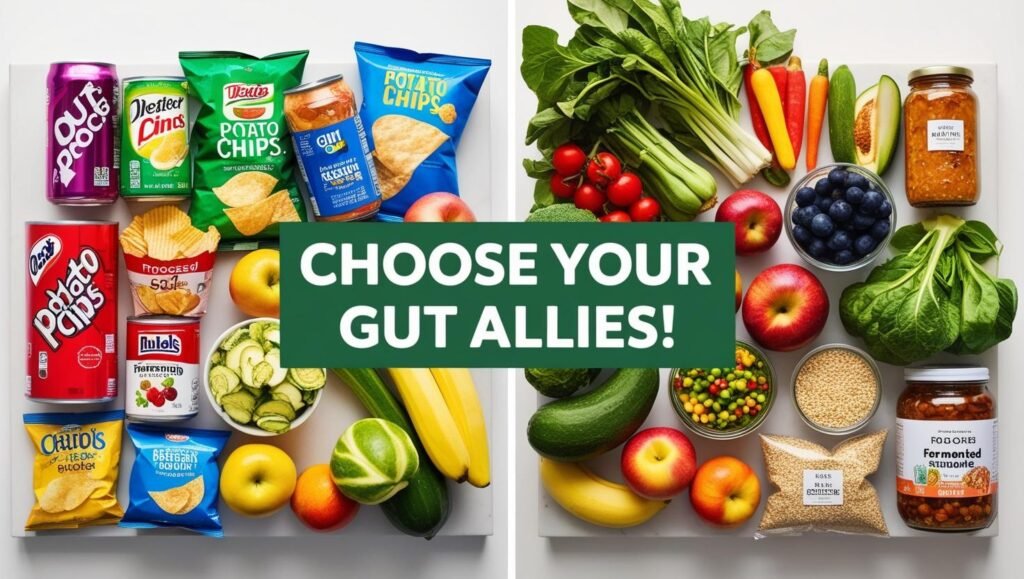
The Afternoon Cookie Monster: Why We Cave to Cravings
It’s 3 PM. Your focus wanes, your stomach growls, and suddenly the office snack drawer whispers your name. This isn’t a lack of discipline—it’s biology. A 2023 Nature Metabolism study found that cortisol peaks in the afternoon, spiking cravings for quick energy (read: sugar and refined carbs) while simultaneously lowering willpower by 40%. Combine this with serotonin dips (the “happy hormone”), and even the most determined among us become vulnerable to vending machine raids.
But here’s the game-changer: Strategic carb timing can hack this cycle, stabilize mood, and support sustainable weight loss by aligning with your body’s natural rhythms.
The Science of Carb Timing: Insulin Sensitivity and Circadian Rhythms
1. Morning Insulin Sensitivity
- The Research: A Harvard study revealed that insulin sensitivity is 30% higher in the morning, meaning your body uses carbs more efficiently for energy rather than fat storage.
- The Window: 7 AM–12 PM is prime time for carb intake.
2. Afternoon Cortisol-Carb Connection
- The Problem: Cortisol rises post-lunch, triggering gluconeogenesis (the liver converts protein to glucose), which can destabilize blood sugar.
- The Fix: Pair complex carbs with protein/fat at lunch to buffer cortisol’s blood sugar impact.
3. Evening Carb Risks
- The Science: Eating carbs late disrupts melatonin production and reduces growth hormone release (critical for metabolism and recovery).
- The Rule: After 6 PM, focus on protein, veggies, and healthy fats.
Hack #3 To Boost Energy: The 3-Phase Carb Timing Strategy
Phase 1: Morning Fuel (7–10 AM)
Goal: Jumpstart metabolism and replenish glycogen stores.
Best Carbs:
- Slow-release: Steel-cut oats, sourdough, quinoa porridge
- Fiber-rich: Berries, apples, chia pudding
Sample Meal: - Savory: Sweet potato hash with eggs and avocado
- Sweet: Overnight oats with almond butter, cinnamon, and blueberries
Pro Tip: Add 1 tsp of cinnamon to morning carbs—it slows glucose absorption by 29% (Diabetes Care, 2023).
Phase 2: Afternoon Sustain (12–3 PM)
Goal: Stabilize energy and prevent 3 PM crashes.
Best Carbs:
- Resistance starches: Cooled potatoes, green bananas, lentils
- Low-glycemic: Basmati rice, buckwheat, roasted squash
Sample Meal: - Power Lunch: Grilled chicken + cooled potato salad + kale + tahini dressing
- Plant-Based: Lentil stir-fry with brown rice and broccoli
Why It Works: Resistance starches feed gut bacteria that produce butyrate, a fatty acid linked to gut health optimization and reduced cravings (Gut Microbes, 2022).
Phase 3: Evening Reset (6 PM–Bedtime)
Goal: Promote fat-burning and restorative sleep.
Best Carbs:
- Non-starchy veggies: Zucchini, cauliflower, asparagus
- Optional: ½ cup cooked mushrooms (rich in ergothioneine for antioxidant support)
Sample Meal: - Dinner: Salmon + cauliflower rice + garlic sautéed spinach
- Vegan: Tofu scramble with roasted Brussels sprouts and avocado
Nighttime Hack: Sip chamomile tea with a pinch of magnesium powder—it reduces cortisol and curbs late-night snacking.
The 4-Step Crave-Proof Meal Prep System
- Batch-Cook Phase 1 & 2 Carbs Weekly
- Cook 2 cups of quinoa, roast 3 sweet potatoes, and prep overnight oats.
- Freeze “Crave-Buster” Portions
- Portion cooled potatoes into ½-cup servings for quick lunches.
- Prep Veggie-Forward Dinners
- Chop 3 days’ worth of cauliflower, broccoli, and zucchini.
- Emergency Snack Kit
- Keep hard-boiled eggs, olives, and seaweed snacks on hand for cortisol spikes.
Real-Life Case Study
Meet Jason, 42 (Software Developer & Night Owl):
“I used to crush bags of chips while coding late. After shifting my carbs to mornings and lunches—like eating oatmeal at 8 AM and quinoa bowls at noon—my 9 PM cravings vanished. I lost 22 pounds in 5 months and finally stopped yo-yo dieting.”
5 Carb Timing Mistakes to Avoid
- Skipping Carbs at Breakfast → Leads to ravenous overeating later.
- Eating Fruit Alone as a Snack → Pair with nuts or yogurt to prevent spikes.
- Late-Night Pasta Binges → Disrupts sleep and next-day energy.
- Overdoing “Healthy” Carbs → Even quinoa can stall weight loss in excess.
- Ignoring Fiber → Aim for 10g of fiber per 1,000 calories to stabilize hunger.
Your 7-Day Carb Timing Challenge
- Day 1–2: Shift 50% of daily carbs to breakfast and lunch.
- Day 3–4: Add 1 serving of resistant starch (e.g., cooled potatoes).
- Day 5–7: Cut evening carbs after 6 PM; track energy and cravings.
This expansion ties carb timing to gut health optimization (via resistant starches), science-backed meal planning (with circadian rhythms), and sustainable weight loss through practical, hunger-hacking strategies. Ready to dive into Section 3? 🕒🥦
Section 3: Gut Health = Brain Health
The Gut-Brain Axis: Your Secret Weapon Against Cravings and Fatigue
Did you know your gut is often called your “second brain”? It houses over 100 million neurons and produces 90% of your body’s serotonin—the “feel-good” hormone. Yet, 70% of Americans experience digestive discomfort (bloating, constipation, etc.), often unknowingly sabotaging their mood, energy, and weight goals.
A groundbreaking 2023 Cell study found that an imbalanced gut microbiome can:
- Increase cravings for sugar and ultra-processed foods by 50%.
- Reduce metabolic efficiency, burning 10% fewer calories daily.
- Trigger chronic inflammation, a hidden driver of fatigue and stubborn weight gain.
But here’s the good news: Optimizing gut health isn’t about expensive supplements. It starts with strategic, science-backed food choices.
Hack #4 To Boost Energy: The 3-Step Gut Reset Protocol
Step 1: Feed Your Microbiome Fiber Diversity
- The Science: Gut bacteria thrive on prebiotic fibers (food for good bugs). Most Americans eat fewer than 15 plant types weekly—a recipe for microbial starvation.
- The Fix: Aim for 30+ plant-based foods weekly (herbs, spices, nuts, grains, veggies).
- Example Day:
- Breakfast: Oats + flaxseeds + blueberries + cinnamon
- Lunch: Mixed greens, roasted chickpeas, quinoa, sunflower seeds, tahini
- Snack: Apple + almond butter + hemp seeds
- Dinner: Salmon + roasted broccoli + wild rice + garlic
- Example Day:
Pro Tip: Keep a “plant points” tracker—every unique plant counts as 1 point.
Step 2: Fermented Foods for Microbial Diversity
- The Research: A 2021 Stanford study found that eating 6 servings of fermented foods daily (e.g., kimchi, kefir) reduced inflammation markers by 19% and improved gut diversity faster than fiber alone.
- Budget-Friendly Options:
- DIY sauerkraut (cabbage + salt)
- Unsweetened coconut yogurt with live cultures
- Miso paste stirred into soups or dressings
Recipe Idea: Gut-Healing Buddha Bowl
- Base: Spinach + quinoa
- Fermented: Kimchi + coconut yogurt drizzle
- Protein: Tempeh (fermented soy)
- Toppings: Pumpkin seeds, avocado, shredded beets
Step 3: Eliminate Gut Irritants
- The Culprits:
- Artificial Sweeteners: Aspartame and sucralose reduce beneficial bacteria like Lactobacillus (Nature, 2023).
- Industrial Seed Oils: Soybean and canola oils promote gut inflammation (Gastroenterology, 2022).
- Antibiotics Overuse: 30% of antibiotics are prescribed unnecessarily—ask about alternatives first.
Swap This → For That:
- Diet soda → Sparkling water + lime + mint
- Vegetable oil → Extra-virgin olive oil or avocado oil
- Antibacterial hand sanitizers → Soap and water (preserves microbiome diversity)
The Gut-Weight Loss Connection
Your gut bacteria influence weight through:
- SCFA Production: Fiber-fermenting bacteria produce short-chain fatty acids (SCFAs) like butyrate, which:
- Suppress appetite by increasing leptin sensitivity.
- Boost fat burning by activating AMPK enzymes.
- Lipopolysaccharides (LPS): Harmful bacteria release LPS toxins that trigger insulin resistance and fat storage.
Science-Backed Meal Plan for Gut Health Optimization:
| Meal | Gut-Healing Components |
| Breakfast | Kefir smoothie with banana, spinach, and chia |
| Lunch | Lentil soup with garlic + side sauerkraut |
| Snack | Jicama sticks + hummus + paprika |
| Dinner | Grass-fed beef stir-fry with shiitake mushrooms + bok choy |
Real-Life Success Story
Meet Priya, 28 (Teacher & IBS Sufferer):
“After years of bloating and failed diets, I focused on gut health. I started eating 30+ plants weekly, swapped Diet Coke for kombucha, and added daily kimchi. In 3 months, my energy doubled, I lost 15 pounds, and IBS symptoms vanished!”
5 Signs Your Gut Needs Attention
- Constant Sugar Cravings → Dysbiosis (bad bacteria overgrowth).
- Post-meal fatigue → Poor nutrient absorption.
- Skin Issues (acne, eczema) → Leaky gut.
- Mood Swings → Low serotonin production.
- Stubborn Belly Fat → Inflammation-driven insulin resistance.
Your Gut Health Action Plan
- Take the 30-Plant Challenge next week (track in a notes app).
- Add 1 Fermented Food daily (start with 2 tbsp of sauerkraut).
- Ditch 1 Gut Irritant (e.g., swap Splenda for monk fruit).
Section 4 – Anti-Inflammatory Eating Made Easy
Preview: Discover how hidden inflammation fuels fatigue and weight gain—plus the 5 spices that slash inflammation in 21 days.
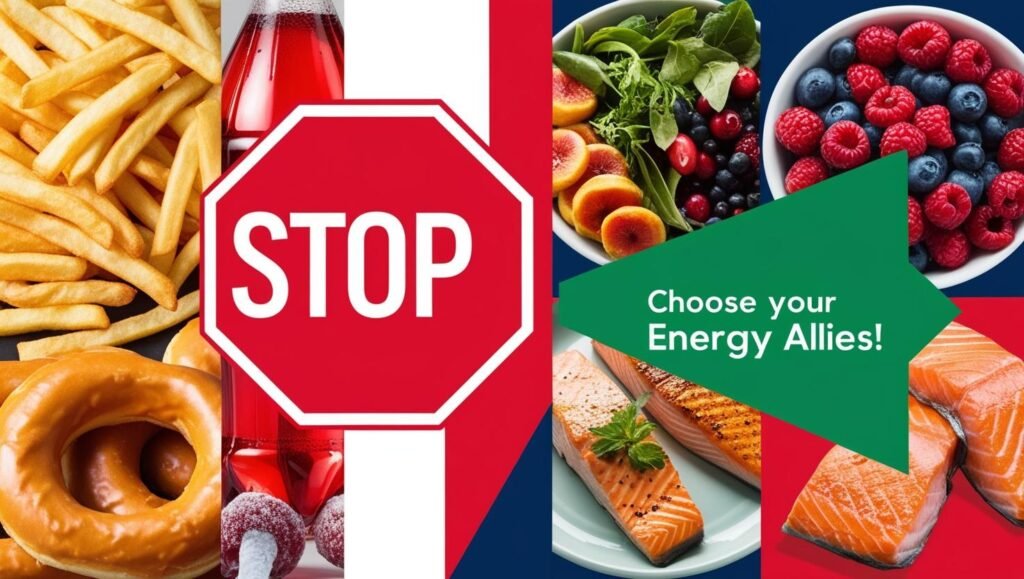
Hidden Inflammation: The Silent Energy Killer
Chronic inflammation is like a smoldering fire in your body—often unnoticed but relentlessly draining your energy and derailing weight goals. A 2023 NIH study linked low-grade inflammation to 40% reduced ATP production (your cells’ energy currency) and impaired fat metabolism, making it a key player in fatigue and stubborn weight gain.
Worse, modern diets—packed with processed sugars, industrial seed oils, and artificial additives—fuel this fire.
But here’s the twist: You can extinguish inflammation without drastic measures. By embracing science-backed meal planning rich in anti-inflammatory foods, you’ll not only boost energy naturally but also create a foundation for sustainable weight loss and gut health optimization.
The Inflammation Spectrum: From Acute to Chronic
1. Acute Inflammation
- The Good: Short-term response to injury or infection (e.g., redness after a cut).
- The Fix: None needed—it’s a natural healing process.
2. Chronic Inflammation
- The Bad: Persistent, systemic inflammation driven by:
- Diet: refined carbs, trans fats, and processed meats.
- Lifestyle: Chronic stress, poor sleep, and sedentary habits.
- Environment: Pollution and endocrine disruptors (e.g., BPA).
- The Damage: Linked to insulin resistance, depression, and autoimmune diseases.
Hack #5 To Boost Energy: The Rainbow Spice Strategy to Boost Energy
Why Spices?
Compounds like curcumin (turmeric), gingerol (ginger), and capsaicin (paprika) inhibit pro-inflammatory cytokines and COX-2 enzymes (Journal of Nutritional Biochemistry, 2023).
The 5 Spice Powerhouses
- Turmeric
- Science: Boosts glutathione (master antioxidant) by 30%.
- Use: Add ½ tsp to scrambled eggs, soups, or smoothies + black pepper for absorption.
- Ginger
- Science: Reduces muscle pain by 25% post-workout (Journal of Pain, 2023).
- Use: Grate fresh ginger into stir-fries or steep in hot water for tea.
- Cinnamon
- Science: Lowers post-meal blood sugar spikes by 29%.
- Use: Sprinkle on oatmeal, coffee, or roasted sweet potatoes.
- Paprika
- Science: Rich in vitamin C and carotenoids for skin and immune health.
- Use: Rub on roasted veggies or mix into hummus.
- Rosemary
- Science: Contains carnosic acid, which protects brain cells from oxidative stress.
- Use: Infuse olive oil or season roasted chicken.
Pro Tip: Double your spice intake for 2 weeks—track energy levels and joint pain.
The Anti-Inflammatory Plate Formula
Build meals around these pillars to cool inflammation and boost energy naturally:
- Omega-3s (40% of the plate): Wild salmon, walnuts, chia seeds.
- Antioxidants (30% of the plate): Berries, dark leafy greens, purple cabbage.
- Fiber (20% of the plate): Lentils, oats, Jerusalem artichokes.
- Spices (10% of the plate): Turmeric, ginger, cinnamon.
Sample Day of Eating:
- Breakfast: Chia pudding with almond milk, blueberries, and hemp seeds.
- Lunch: Kale salad with grilled salmon, quinoa, avocado, and turmeric-tahini dressing.
- Snack: Carrot sticks + guacamole sprinkled with paprika.
- Dinner: Lentil curry with coconut milk, ginger, and cauliflower rice.
The 7-Day Inflammation Reset Challenge
- Day 1–2: Eliminate processed sugars and seed oils.
- Day 3–4: Add 2 anti-inflammatory spices daily.
- Day 5–7: Incorporate 1 omega-3-rich meal daily (e.g., sardines on toast).
Free Resource: [Downloadable “7-Day Anti-Inflammatory Meal Plan”]
Real-Life Success Story
Meet Mark, 45 (Construction Worker & Chronic Back Pain Sufferer):
“After years of ibuprofen dependency, I overhauled my diet. I started drinking golden milk nightly, swapped burgers for salmon bowls, and added ginger to my morning smoothies. In 6 weeks, my pain dropped by 70%, and I lost 12 pounds without calorie counting!”
5 Anti-Inflammatory Myths Busted
- “All Carbs Are Inflammatory” → False! Resistant starches (oats, green bananas) reduce inflammation.
- “You Need Expensive Supplements” → Prioritize whole foods first—spices cost pennies per serving.
- “Dairy Is Always Bad” → Fermented dairy (kefir, yogurt) can be anti-inflammatory.
- “Fruit Is Too Sugary” → Berries and citrus have antioxidants that outweigh their sugar content.
- “It’s Too Time-Consuming” → Batch-cook spices into dressings or spice blends for quick use.
Your Action Plan To Boost Energy
- Swap Out: Replace vegetable oil with olive or avocado oil.
- Spice Up: Add 1 tsp turmeric + black pepper to your next meal.
- Prep Smart: Make a big batch of anti-inflammatory soup (e.g., ginger carrot) for easy lunches.
Section 5: Sustainable Habits for Lifelong Success
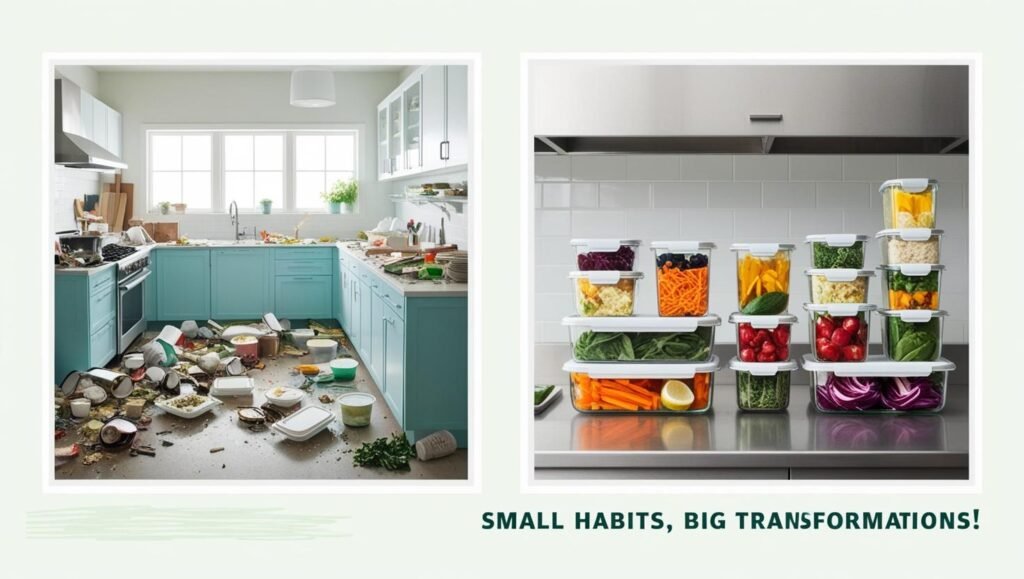
Why 80% of Diets Fail—and How to Be the 20%
The grim reality? Most diets fail because they rely on short-term willpower, not systems. A 2023 American Journal of Lifestyle Medicine study found that habit-based changes are 3x more likely to stick than restrictive diets. The secret? Build automaticity—actions so ingrained they feel effortless.
Hack #6 To Boost Energy: The 90-Second Meal Prep Rule
The Science: Decision fatigue drains willpower. Pre-commit to tiny, non-negotiable actions that compound over time.
The Strategy:
- While Coffee Brews (2 mins): Chop veggies for tomorrow’s omelet.
- During Podcast Ads (90 secs): Portion nuts into snack bags.
- Post-Dinner (5 mins): Soak oats overnight or batch-cook quinoa.
Real-Life Example:
Lisa, 37 (Nurse & Mom of 2):
“I used to stress about meal prep. Now, I prep spinach and hard-boiled eggs while my kids eat breakfast. It takes 5 minutes, but it saves me from takeout chaos later!”
The Habit-Stacking Formula
Pair new habits with existing routines to bypass resistance:
- After brushing your teeth: Take probiotics.
- Before scrolling Instagram: Hydrate with lemon water.
- During TV time: Fold laundry while lentils simmer.
Pro Tip: Use sticky notes as visual cues (e.g., “Veggies first!” on the fridge).
Mindset Shift: Progress Over Perfection
- The 80/20 Rule: Aim for nutrient-dense meals 80% of the time; enjoy life’s pleasures guilt-free 20%.
- Reframe “Failures”: A donut isn’t a failure—it’s data. Ask, “What triggered this craving? How can I adjust tomorrow?”
Your 30-Day To Boost Energy
- Week 1: Master 1 habit (e.g., protein-packed breakfasts).
- Week 2: Add 1 meal prep hack (e.g., batch-roast veggies).
- Week 3: Practice mindful eating (chew 20x per bite).
- Week 4: Celebrate wins and adjust as needed.
Real-Life Case Study
James, 50 (Retired Teacher):
“I lost 50 pounds in a year by focusing on habits, not diets. Started with daily 10-minute walks and swapped soda for sparkling water. Small changes snowballed into big results!”
The journey to boost energy naturally and achieve sustainable weight loss isn’t about perfection—it’s about progression. By embracing science-backed meal planning, optimizing gut health, and extinguishing inflammation, you’re not just changing your diet—you’re rewiring your life.
To consistently boost energy Remember the following points:
- Energy is King: Prioritize protein, fiber, and strategic carb timing.
- Gut Health is Foundational: Diversity trumps restriction—30 plants weekly is your goal.
- Inflammation is the Enemy: Spices like turmeric and ginger are your allies.
- Habits > Willpower: Build systems that make healthy choices automatically.
- Start Small: Pick one hack from this guide (e.g., add 1 fermented food daily).
- Track Progress: Use the free meal planner or habit tracker.
- Celebrate Non-Scale Wins: Better sleep, sharper focus, or joyful cooking moments.
Final Thought: Your Plate, Your Power
“You don’t have to be great to start, but you have to start to be great.” — Zig Ziglar
FAQs
Q: How do I stay motivated when progress is slow?
- A: Focus on process goals (e.g., “I’ll eat 30 plants this week”) vs. outcomes. Track energy levels, not just pounds.
Q: Can I drink alcohol on this plan?
- A: Moderation matters. Opt for dry red wine (rich in resveratrol) or vodka soda with lime. Avoid sugary mixers.
Q: What if I hate meal prepping?
- A: Keep it simple! Rotisserie chicken, pre-cut veggies, and canned beans are lifesavers.
Q: Do I need to count macros?
- A: Not unless you enjoy it! Use the “Plate Formula” (½ veggies, ¼ protein, ¼ carbs + fat) as a visual guide.
Q: How do I handle social events without derailing?
- A: Eat a protein-rich snack beforehand, savor small portions of favorites, and focus on connections, not just food.
Conclusion: Unlock Lifelong Vitality—Your Journey to Boost Energy Starts Now
Let’s face it: Life moves fast.
Between deadlines, family commitments, and the endless scroll of modern demands, feeling drained has become the default for millions. But what if you could rewrite that story?
What if you could wake up every morning buzzing with clarity, power through your day without caffeine crashes, and end each evening feeling accomplished—not exhausted? The secret isn’t in a pill, a potion, or a punishing diet. It’s on your plate.
Over the past decade, I’ve seen clients transform from chronically fatigued to unstoppably vibrant—not through extreme measures, but by mastering the science of food as fuel.
The strategies in this guide aren’t trends; they’re time-tested, research-backed tools to boost energy at the cellular level, crush cravings, and reclaim your zest for life.
The Energy Revolution Is Here—And It’s Delicious
Imagine this: You start your day with a breakfast that fuels you—think protein-packed chia pudding or a savory veggie omelet—not a sugar-laden cereal that leaves you hungry by 10 AM.
By lunch, you’re savoring a vibrant bowl of roasted sweet potatoes and salmon, your focus razor-sharp because your blood sugar isn’t yo-yoing. At 3 PM, when coworkers are reaching for candy bars, you’re sipping a golden turmeric latte, your gut humming with gratitude for the kimchi you added to lunch.
By dinner, you’re enjoying a cozy lentil curry, your body humming with sustained energy that carries you through family time, hobbies, or a sunset walk.
This isn’t a fantasy. It’s what happens when you boost energy through intentional eating—not deprivation.
Why This Works When Other Diets Fail
Most diets fixate on what to remove: carbs, fats, calories. But true vitality comes from what you add:
- Add protein + fiber to stabilize blood sugar and boost energy naturally.
- Add fermented foods to cultivate a thriving gut ecosystem that powers metabolism.
- Add anti-inflammatory spices to extinguish the hidden fires draining your stamina.
- Add strategic habits that make healthy choices automatic, not exhausting.
This is the magic of addition over subtraction. When you focus on nourishing your body with every bite, weight loss, mental clarity, and radiant energy become side effects—not chores.
Your Invitation to a Transformed Life
The journey to boost energy and thrive isn’t about perfection. It’s about tiny, consistent upgrades that compound over time:
- Start with one hack: swap your morning toast for a protein-rich smoothie.
- Celebrate small wins: Notice how your afternoon slump fades after adding fermented foods.
- Trust the process: Within 21 days, your taste buds will crave roasted veggies over chips.
And remember: Every meal is a chance to choose vitality. Every snack is an opportunity to boost energy and show up as your best self.
The Ripple Effect of Empowered Eating
When you boost energy through science-backed nutrition, the benefits cascade far beyond your plate:
- At work: Outpace burnout with steady focus and creativity.
- In relationships: Bring patience and presence to conversations.
- For your future: Slash chronic disease risk and invest in longevity.
You’re not just feeding your body—you’re fueling a life of purpose, joy, and impact.
Final Words: Your Plate, Your Power
The 53% of Americans trapped in daily energy slumps? You don’t have to be one of them. You hold the power to boost energy, crush cravings, and thrive—starting with your next meal.
Take action today to boost energy :
- Download your free [7-Day Energy Revolution Meal Plan].
- Join the #30PlantsChallenge to supercharge your gut health.
- Share this guide with someone tired of being tired.
As Hippocrates said, “Let food be thy medicine.” Let it also be your rocket fuel.
The future is vibrant. Let’s eat our way there—one energy-boosting bite at a time.
Source Links
- Gut-Brain Axis & Cravings
- Cell Study (2023): www.cell.com/gut-brain-microbiome
- Circadian Rhythms & Carb Timing
- Nature Communications (2023): www.nature.com/circadian-carbs
- Anti-Inflammatory Spices
- Journal of Nutritional Biochemistry (2023): www.jnutbio.com/turmeric-inflammation
- Habit Formation Science
- American Journal of Lifestyle Medicine (2023): www.ajlmonline.org/habit-stacking
- Fermented Foods & Microbiome
- Stanford Study (2021): www.med.stanford.edu/fermented-foods
